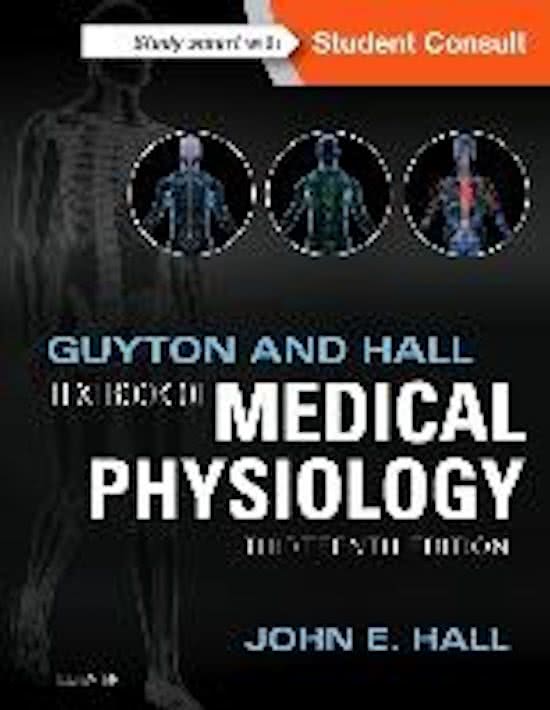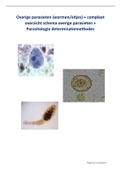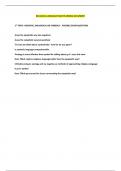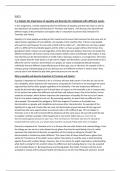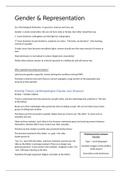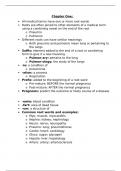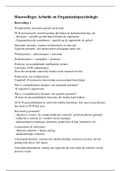1. Wat zijn purines?
2. Wat zijn pyrimidines?
3. Welke binden met elkaar?
4. Hoeveel cellen zijn er in je lichaam?
5. Hoeveel vloeistof is er in je lichaam? Hoeveel intracellulair en hoeveel extracellulair?
6. Hoe vaak doorloopt het bloed de gehele bloedsomloop?
7. Hoe ver liggen cellen meestal maximaal van de haarvaten af?
8. Hoe dik is het membraan van de alveoli?
9. Welke stoffen worden door de nieren uitgescheiden?
10. Wat doet adrenocorticoid hormoon?
11. Wat is het nut van het integumentary system?
12. Hoe zwaar is de huid?
13. Hoe wordt de concentratie zuurstof constant gehouden?
14. Hoe wordt de concentratie koolstofdioxide constant gehouden?
15. Hoe wordt de bloeddruk gereguleerd?
16. Hoe bereken je de gain (winst) van een controlesysteem?
17. Bij iemand waar het baroreceptorsysteem niet werkt wordt bloed ingespoten waardoor de
bloeddruk stijgt van 100 tot 150 mm hg. Bij iemand waarbij het baroreceptorsysteem wel werkt stijgt
de bloeddruk slechts 25 mm hg, dus naar 125 mm hg. Wat is de gain?
18. Hoe hoog is de gain voor temperatuurcorrectie?
19. Wat gebeurt er als de pH te hoog/te laag wordt?
20. Wat gebeurt er als de kaliumconcentratie te laag wordt?
21. Wat gebeurt er als de kaliumconcentratie te hoog wordt?
22. Wat gebeurt er als de calciumconcentratie te laag wordt?
23. Wat gebeurt er als de glucoseconcentratie te laag wordt?
Antwoorden
1. Adenine en Guanine
2. Cytosine en Thymine
3. A met T en C met G
4. 25 biljoen rode bloedcellen, 75 biljoen andere cellen
5. 60%, waarvan 2/3 intracellulair en 1/3 extracellulair
6. 1x per minuut in rust en tot 6x per minuut bij inspanning
7. Meestal liggen ze niet verder dan 50 micrometer van de haarvaten.
8. 0,4-2 micrometer
9. Ureum (afvalproduct eiwitafbraak), urinezuur (afvalproduct afbraak purines), overmatige ionen en
water
10. Controleren van k, na en eiwitmetabolisme
11. Afweer, temperatuurhuishouding, excretie van afval en voelen van de buitenwereld
12. 12-15% van het lichaamsgewicht
13. Hemoglobine, heeft een sterke affiniteit voor zuurstof en laat het alleen los als de
zuurstofconcentratie in een weefsel laag is.

